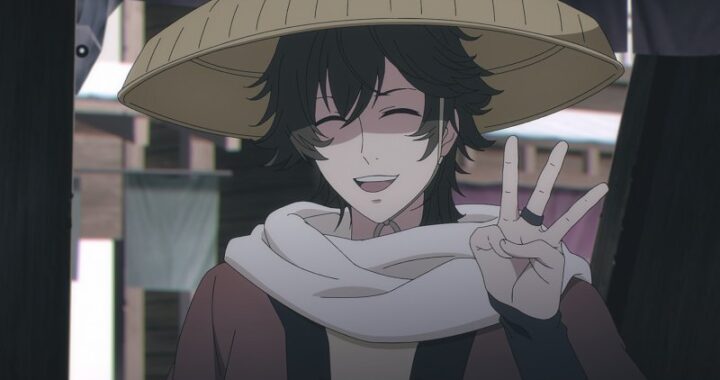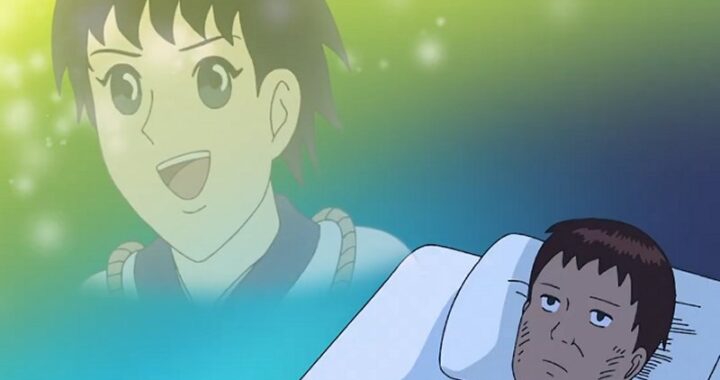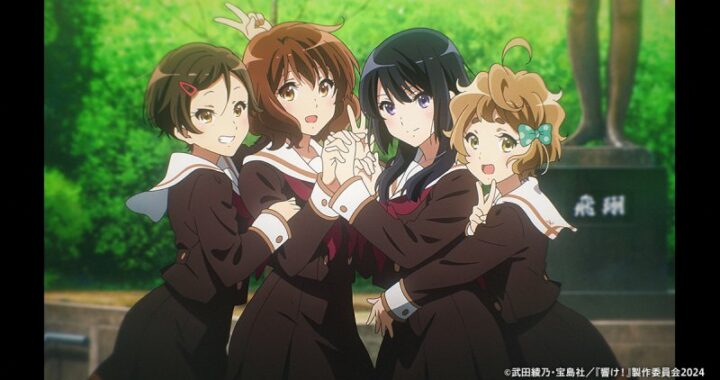 Social and political frictions collide with a man that has a plan to reshape the country and only Section 9 may be able to stop him from starting a new world war.
Social and political frictions collide with a man that has a plan to reshape the country and only Section 9 may be able to stop him from starting a new world war.
What They Say:
The year is 2030, and an influx of refuges have effortlessly transformed themselves into a terrorist organization known as the “Individual Eleven.” With a sadistic intent of mass destruction, will they triumph in victory or discover the gloomy pitfalls of defeat?
The Review:
Audio:
The audio presentation for this release is pretty strong as it features a Dolby TrueHD 5.1 mix for both language tracks that has a lot going for it. While the music is an area where it really shines the most with the amount of bass and the overall enveloping feel, it also makes out very well with the action sequences with solid impact and a lot of directionality to the rear channels that helps to drive it home. It also knows how to work the quiet scenes just right as well with little movements here and there, the clicking of shoes or the flow of data across the screen. It’s definitely a very enjoyable mix that shows off just how much attention went into the overall production with its design. We didn’t experience any dropouts or distortions during regular playback of the Japanese language track.
Video:
Originally released in 2007, the transfer for this movie is presented in its original aspect ratio of 1.78:1 in 1080i using the AVC codec. The feature is a compilation from the TV series with a good bit of new footage mixed in that has a run time of just over two and a half hours. The encoding here is really quite good considering when the show was animated as it has a rich, detailed design to it with some great colors and a natural flow. The bit rate tends to spend most of its time in the thirties and it shows in some very solid backgrounds, even in the usually troublesome green hall interiors. The series this came from was ahead of its time in a lot of ways when it aired, and the transfer her reflects it as it holds up very well and is very appealing. The big action sequences look fantastic and the quieter moments are well handled as well. The transfer avoids the usual problems and in general has a very clean and sharp look to it.
Packaging:
The packaging for this release is done in a standard size Blu-ray case with no slipcovers to it. The front cover artwork has a bit of a murky feel to it as it blends the characters together a touch and has them in semi-action poses with very different colors to them with their outfits. It’s not horrid, but it doesn’t feel like it blends well, especially with the symbol placement on top of the artwork on the left side. The background brings in a bit of color with the blue data shading there. It’s a serious looking cover that does things right here but without any particular style or definition. It’s an easy sell but in the end it is just a cast shot. The back cover goes for darker colors with the logo and movie title along the top while the rest of it has the Individual Eleven logo as the background in shades of blue. On top of that is a fairly text and picture heavy piece that conveys most of the story basics and what the discs features are, including an accurate listing of the audio codecs. The main technical grid breaks things down cleanly and clearly and overall the layout has a good look to it, even if it is a touch busy in how it ties together all the pictures. No show related inserts are included nor is there a reversible cover.
Menu:
The menu design for this release is pretty nicely done in-theme as the main menu features a red hued widescreen style border while clips from the feature play within through the filter. Most of it is CG based so it works well in creating an otherworldly techno-feel while the strong instrumental music plays along that gets the mood working even more. The navigation strip along the bottom is simple with the usual top level items there and a very easy to access series of submenus that makes it all a breeze. The layout is good but the disc didn’t read our players’ language presets and defaulted to English with sign/song subtitles. We also had iffy luck on restarting the feature as to whether it would go back to where we left off or start up from scratch again.
Extras:
The extras are definitely interesting to revisit after all these years. The short one here is the Tachikomatic Days piece which runs just under four minutes or so but is a good bit of comedy to be sure. The big extra is the Stand Alone Complex Archives with is a thirty-two minute standard definition extra encoded with the AVC codec rather than just a cheap port of the original, so it has a much better look with the higher bitrate. This goes into the background and making of The Laughing Man and definitely is fun to watch after the movie to look at various parts of it through the people behind it all. Sadly, there are no chapter marks included with it so navigation is a real pain.
Content: (please note that content portions of a review may contain spoilers)
After the relative success of the first feature adapting the first season of the series into a more streamlined and relatively straightforward story, the adaptation of the second half of the series went in a rather different direction. Taking the Individual Eleven storyline and once again excising any of the extra material that didn’t fit in, it expanded on things more than The Laughing Man did by tightening up and getting a bit deeper into the relationship that Motoko shares with the character of Kuze. It may not be terribly noticeable if you haven’t watched it in ages, but this feature has a more layered and nuanced approach to the story overall while still bringing in the pieces that makes the series as exciting as it was. But like The Laughing Man, it suffers in being a nearly three hour narrative that can be overwhelming to watch in a single sitting because of the way it unfolds.
The framing of this story is particularly interesting since it is relatively timeless and can be applied to just about any nation during multiple times in their history. Taking place half a year after The Laughing Man storyline, Section 9 finds itself being manipulated into events by a government man named Ghoda who has his own section he’s responsible for. Through some careful planning, he’s able to get Section 9 to eliminate an element of his own side that would have been problematic for them to take down. When it all unfolds under Motoko and Aramaki’s supervision, there’s a feeling that something about it is too neat, to tightly done with other factors falling into place all too easily. That gives them the nudge they need to start investigating.
The state of the country during all of this is a key part of the story as Japan has found itself at another crossroads. After surviving a pair of wars and emerging from some rather dark times, the Japan Miracle now finds itself threatened in the eyes of some. Because of all that they had to do to get back in place, there’s some three million refugees that are in the country and it’s causing a lot of friction. The problem is though that they were all essentially invited there to help with the reconstruction, but with it mostly done and the country facing some serious economic problems again the refugee issue is taking center stage. With all of these people here, a growing movement to deport them at the least is there as a vocal segment of the population is becoming interested in the idea of isolationism again.
What makes matters worse is when a group of terrorists end up appearing atop a building and make a very distinct statement when almost all of them commit suicide. The group is known as the Individual Eleven prior to that and was growing in stature because of what they were doing. The group was responsible for a number of terrorist incidents prior to this incident, including an attack on the prime minister that failed, and of the suicides sends a clear signal to others. What gives Section 9 something to work with is that one of them survived and was the only person to be caught on video during the attack on the prime minister. This leads the investigation down the path to finding out more about him, which highlights much of the dark nature of the country with how they’ve treated the refugees and others over time as well as focusing in on those that rallied around Kuze, the sole survivor of the rooftop incident.
While The Laughing man story focused on the way the world changed with technology and how it can be manipulated through smart people and conspiracies that can flow from it as well, the Individual Eleven focuses much more on the social and economic impact of this future where Japan has survived the Third and Fourth World Wars. The invited guests label applied to the immigrant workers is interesting as it seeing how they’re treated and pushed aside, vilified after doing so much of the physical work needed to bring the country back from where it was. Getting this story through the view of what Kuze had gone through in the past, with his military involvement and the atrocities that were visited upon, gives us a really detailed look at the world. With The Laughing Man, we had little real connection to him overall for quiet a lot of time, but here we get to know Kuze much better and the relationship and affinity that is felt between him and Motoko as she investigates everything is made much clearer, much more personal. It has a somewhat more subtle approach to it and less of a police procedural, but it maintains a lot of similarities as well as the various cast members go through the investigation. The focus is much heavier on Motoko though whereas we saw Togusa taking a strong lead in the previous feature.
While the character drama is quite good, particularly between Kuze and Motoko as it gets into the final act, the action is really quite a lot of fun in the same act as well as the plan gets into its big stage. There’s a very personal level to it all, but watching as Ghoda’s plans are realized and everyone starts to get a clue that they’re pawns in the midst of things, especially when an American Empire sub shows up in the bay ready to nuke the whole area to prevent the immigrants from obtaining a nuclear device of their own, it’s pretty damn impressive. It has that kind of slow moving sprawl to it as events play out, but it also ramps things up at key times in order to really drive it home just how significant the actions underway are. The cost of lives here isn’t on the scale that the country has had to deal with before, but it’s still significant.
In Summary:
When taking the original season that this ran and removing the standalone episodes, reworking the film in the way that it does here by expanding it and tightening events, we get a pretty fascinating movie overall, but one that still does suffer in the same way that the first one did. With it coming in a bit under three hours, it’s just a long, draining movie. It has some great moments, particularly in the final lengthy act, but it also meanders a lot in getting there. There is a lot of appeal in how that unfolds, giving us a more nuanced and examined look at how the events came about and the people behind it, but unlike the TV show proper, without the breaks in between to humanize the rest, it can be overwhelming. I found that watching it in two parts over two nights helped to mitigate the issue some, but with it taking a fair bit of time to really get rolling, that only helped to some degree. Still, this is an impressive work overall that gives us something markedly different from the first feature, ramps up the kind of action involved and really tries to do something complicated without it being laid out on a silver platter. It does make me wish for the second season to hit high definition as well, but this certainly is a welcome way to pass the time until that happens.
Features:
Japanese Dolby TrueHD 5.1 Language, English Dolby TrueHD 5.1 Language, English Subtitles, Stand Alone Complex Archives, Tachikomatic Days
 Content Grade: B+
Content Grade: B+
Audio Grade: A-
Video Grade: A
Packaging Grade: B+
Menu Grade: B
Extras Grade: B+
Released By: Bandai Entertainment
Release Date: June 21st, 2011
MSRP: $34.98
Running Time: 160 Minutes
Video Encoding: 1080i AVC
Aspect Ratio: 1.78:1
Review Equipment:
Sony KDS-R70XBR2 70″ LCoS 1080P HDTV, Sony PlayStation3 Blu-ray player via HDMI set to 1080p, Onkyo TX-SR605 Receiver and Panasonic SB-TP20S Multi-Channel Speaker System With 100-Watt Subwoofer.




